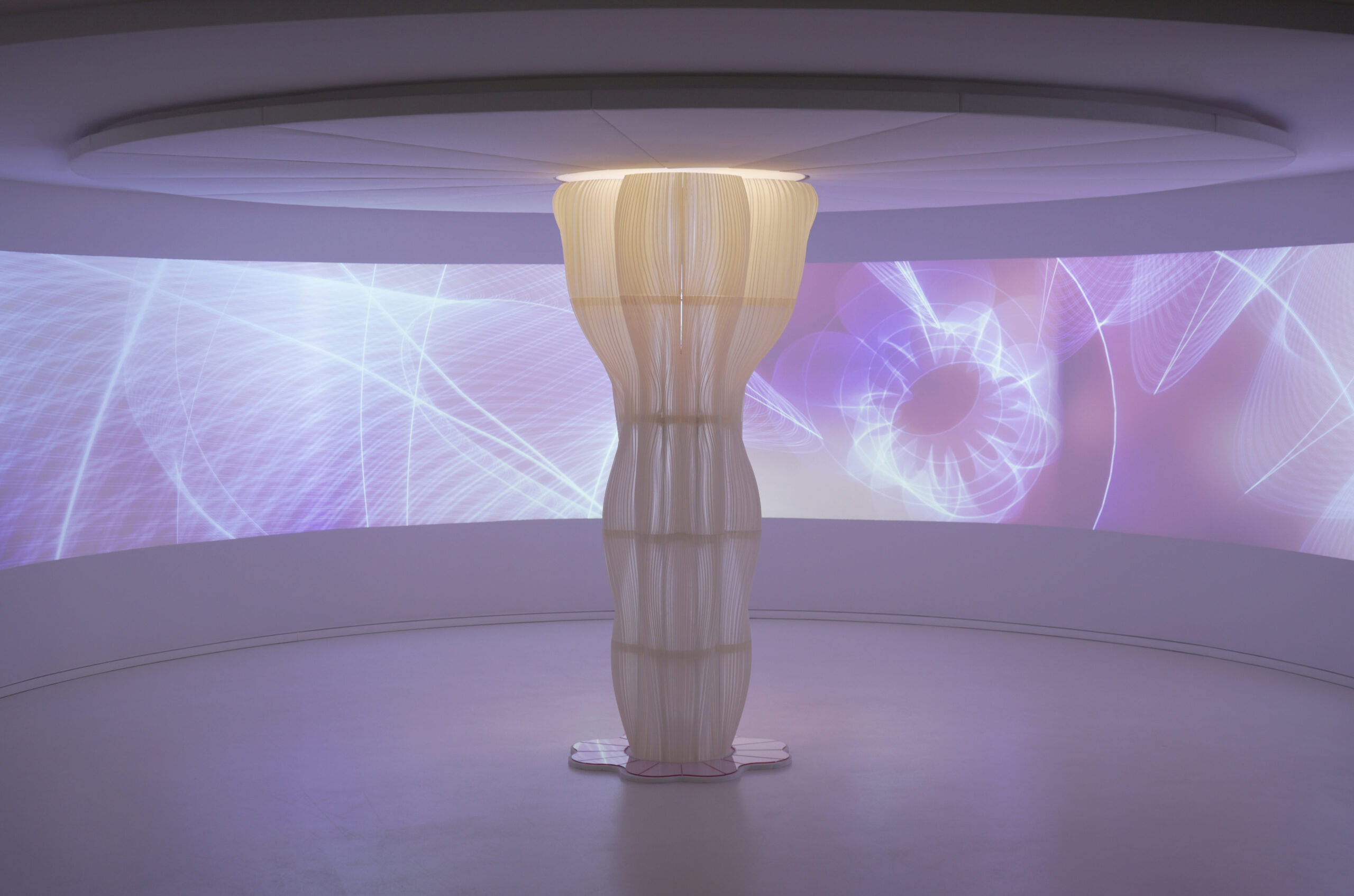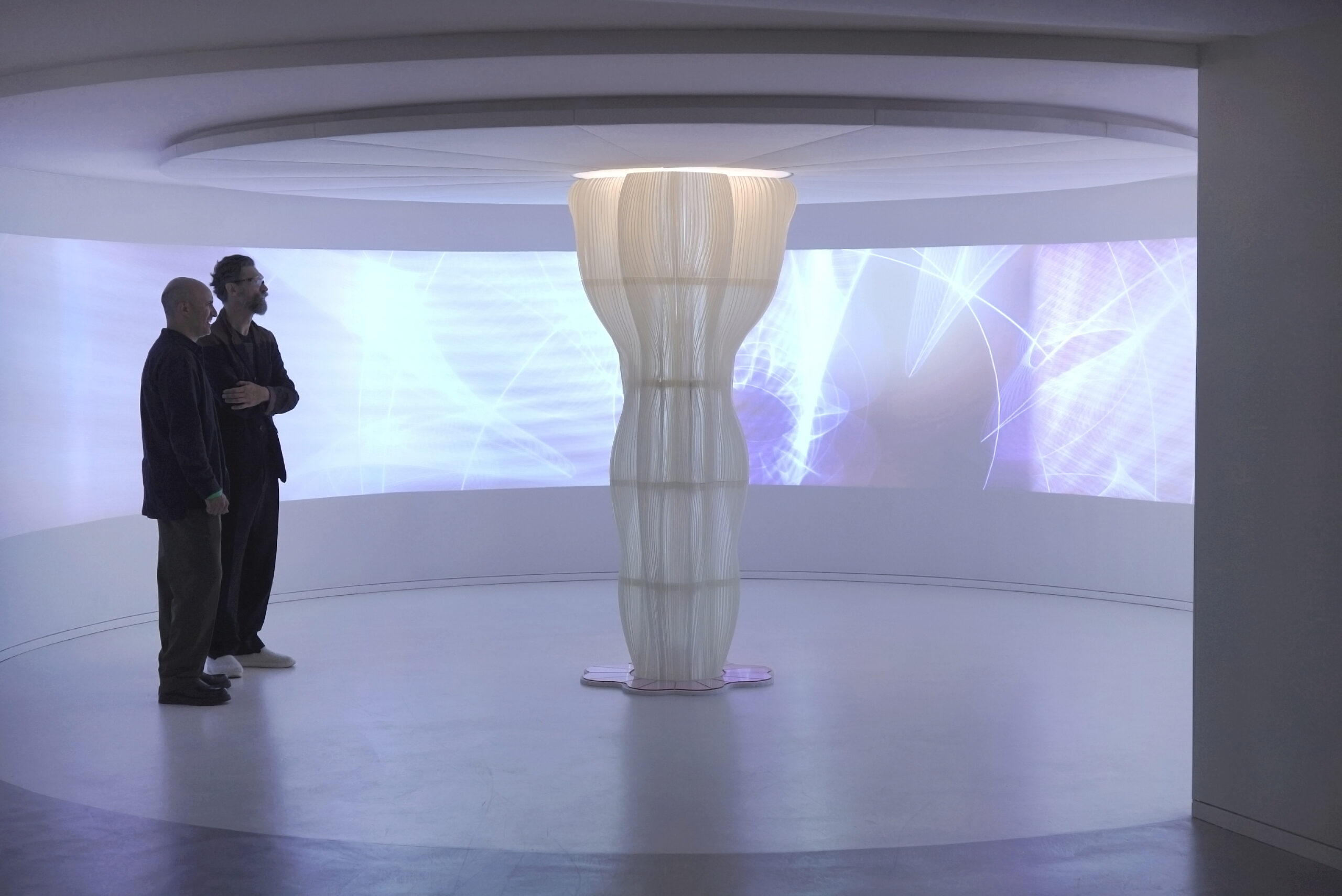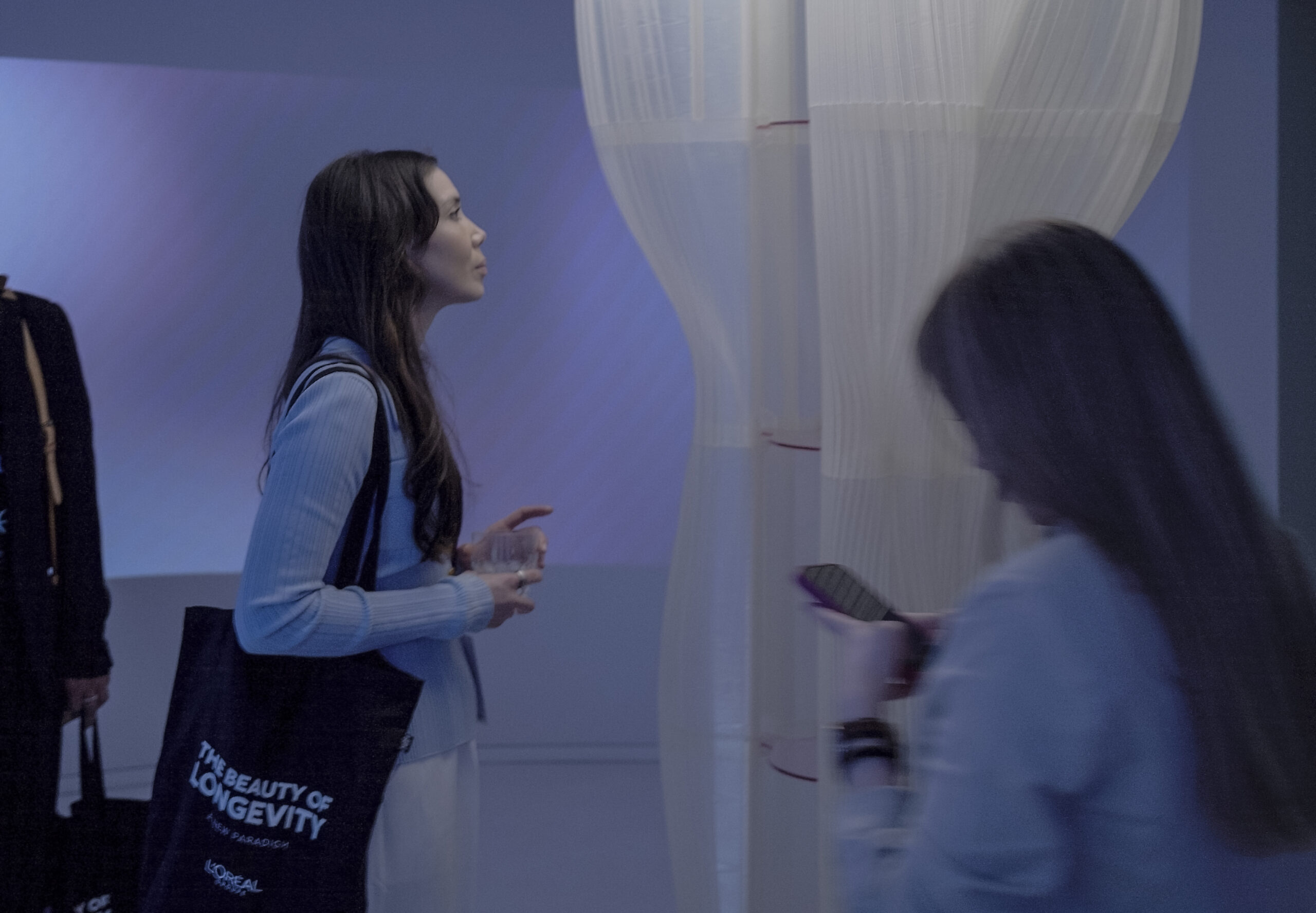Urban Longevity

Poly.Derma, designed for L’Oréal Paris, is a living sculpture that blurs the boundaries between skin, space, and biotechnology. It embodies a post-anthropocentric phenomenology, where the sculpture’s skin is not just metaphorically “home” or “body,” but literally a living, responsive surface.
Its inner core — containing red algae that produce astaxanthin — functions like an organ. Acting as both organism and architecture, it invites sensory intimacy, microbial entanglement, and a rethinking of skin as interface.

Skin as Interface
The biodegradable, algae-based polymer skin recalls both architectural envelope and human dermis. It breathes, degrades, and suggests impermanence.
The skin isn’t merely a boundary; it’s a sensing, porous membrane.

Inner Core as Life-System
The glass core sustains red algae that produce astaxanthin — a compound already present within the human body.
The sculpture mirrors our internal chemistry, evoking a symbiotic entanglement between human and microbial life, challenging where the body ends, and its environment begins.

Body–Space Continuum
The sculpture’s folded, sinuous form collapses inside and outside into one spatial condition. It is not an object in space, but a condition of spatial being.


Metabolizing Architecture
Composed of living systems and biodegradable matter, Poly.Derma introduces metabolism, decay, and transformation. It imagines architecture not as static form, but as dynamic process — alive, aging, interacting.

1 / 3


